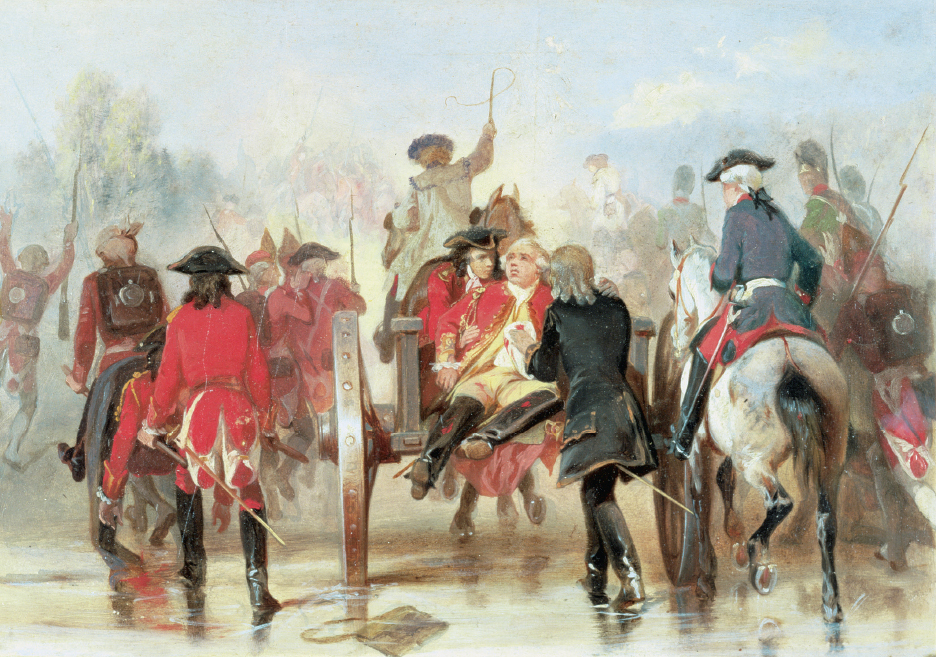America’s History: Printed Page 137
America: A Concise History: Printed Page 121
America’s History: Value Edition: Printed Page 117
The Great War for Empire
By 1756, the American conflict had spread to Europe, where it was known as the Seven Years’ War, and pitted Britain and Prussia against France, Spain, and Austria. When Britain mounted major offensives in India, West Africa, and the West Indies as well as in North America, the conflict became the Great War for Empire.

William Pitt emerged as the architect of the British war effort. Pitt was a committed expansionist with a touch of arrogance. “I know that I can save this country and that I alone can,” he boasted. A master strategist, he planned to cripple France by seizing its colonies. In North America, he enjoyed a decisive demographic advantage, since George II’s 2 million subjects outnumbered the French 14 to 1. To mobilize the colonists, Pitt paid half the cost of their troops and supplied them with arms and equipment, at a cost of £1 million a year. He also committed a fleet of British ships and 30,000 British soldiers to the conflict in America.
Beginning in 1758, the powerful Anglo-American forces moved from one triumph to the next, in part because they brought Indian allies back into the fold. They forced the French to abandon Fort Duquesne (renamed Fort Pitt) and then captured Fort Louisbourg, a stronghold at the mouth of the St. Lawrence. In 1759, an armada led by British general James Wolfe sailed down the St. Lawrence and took Quebec, the heart of France’s American empire. The Royal Navy prevented French reinforcements from crossing the Atlantic, allowing British forces to complete the conquest of Canada in 1760 by capturing Montreal (Map 4.5).

Elsewhere, the British likewise had great success. From Spain, the British won Cuba and the Philippine Islands. Fulfilling Pitt’s dream, the East India Company ousted French traders from India, and British forces seized French Senegal in West Africa. They also captured the rich sugar islands of Martinique and Guadeloupe in the French West Indies, but at the insistence of the West Indian sugar lobby (which wanted to protect its monopoly), the ministry returned the islands to France in the Treaty of Paris of 1763. Despite that controversial decision, the treaty confirmed Britain’s triumph. It granted Britain sovereignty over half of North America, including French Canada, all French territory east of the Mississippi River, Spanish Florida, and the recent conquests in Africa and India. Britain had forged a commercial and colonial empire that was nearly worldwide.
Though Britain had won cautious support from some Native American groups in the late stages of the war, its territorial acquisitions alarmed many native peoples from New York to the Mississippi, who preferred the presence of a few French traders to an influx of thousands of Anglo-American settlers. To encourage the French to return, the Ottawa chief Pontiac declared, “I am French, and I want to die French.” Neolin, a Delaware prophet, went further, calling for the expulsion of all white-skinned invaders: “If you suffer the English among you, you are dead men. Sickness, smallpox, and their poison [rum] will destroy you entirely.” In 1763, inspired by Neolin’s nativist vision, Pontiac led a major uprising at Detroit. Following his example, Indians throughout the Great Lakes and Ohio Valley seized nearly every British military garrison west of Fort Niagara, besieged Fort Pitt, and killed or captured more than 2,000 settlers.
British military expeditions defeated the Delawares near Fort Pitt and broke the siege of Detroit, but it took the army nearly two years to reclaim all the posts it had lost. In the peace settlement, Pontiac and his allies accepted the British as their new political “fathers.” The British ministry, having learned how expensive it was to control the trans-Appalachian west, issued the Royal Proclamation of 1763, which confirmed Indian control of the region and declared it off-limits to colonial settlement. It was an edict that many colonists would ignore.
EXPLAIN CONSEQUENCES
Question
How did the Seven Years’ War reshape Britain’s empire in North America and affect native peoples?